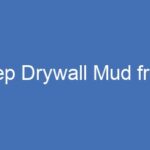Drywall, a fundamental element in modern construction, comes in various types tailored to specific needs. Understanding the distinctions between regular drywall and specialized varieties like fire-resistant, moisture-resistant, and soundproof drywall is crucial for successful construction projects.
1. Regular Drywall-The Foundation
Characteristics: Regular drywall, also known as standard drywall, consists of a gypsum core encased between layers of paper. This composition provides a balance of strength and flexibility, making it a versatile choice for a wide range of standard applications in construction.
Advantages
Cost-Effective: Regular drywall is widely appreciated for its affordability, making it a budget-friendly option for various projects. This cost-effectiveness extends to both material acquisition and installation expenses.
Easy to Work With: The simplicity of regular drywall makes it easy to handle and install. Its standardized composition allows for straightforward cutting, fitting, and fastening during the installation process, making it accessible for both DIY enthusiasts and professional contractors.
Limitations: Despite its widespread use, regular drywall does have some limitations that need to be considered:
Susceptible to Moisture Damage: One significant drawback is its vulnerability to moisture. In humid environments or areas prone to water exposure, regular drywall may experience damage, including warping, mold growth, and compromised structural integrity. It is crucial to use moisture-resistant drywall in spaces where moisture is a concern.
Understanding these characteristics, advantages, and limitations is essential when deciding whether regular drywall is the most suitable choice for a specific project. In situations where moisture resistance is crucial, exploring alternative types, such as moisture-resistant or mold-resistant drywall, becomes imperative.
What Is Drywall Made Of?
Most drywall varieties are fabricated from gypsum, sandwiched between two sturdy sheets of paper. Special coatings and additives can be incorporated to enhance drywall’s properties, making it soundproof, fireproof, rot-resistant, moisture-resistant, or mold-resistant.
Types of Drywall
- Regular Drywall or White Board
- Greenboard Drywall
- Blue Board Drywall
- Paperless Drywall
- Purple Drywall
- Type X Drywall
- Type C Drywall
- Soundproof Drywall
Regular Drywall or White Board
Best for: Walls and ceilings in most rooms
Regular drywall, often known as white board, typically features a white side and a brown side. It’s the most common type used in homes and is suitable for most rooms. While made of gypsum, it lacks the mold and mildew resistance found in other types designed for damp areas. It is commonly used in bedrooms, living rooms, hallways, and some basements. This type of drywall is budget-friendly and comes in various sizes, with typical thicknesses ranging from 3/8 inches to 1 inch. Most homes use 1/2-inch thick drywall, which costs approximately $12 to $18 for a 4- by 8-foot panel.
Greenboard Drywall
Best for: Bathrooms and kitchens
Greenboard drywall, also known as moisture-resistant drywall, features a green surface that enhances its resistance to water compared to regular drywall. While it’s made from the same materials as regular drywall, its paper covering is wax-coated. It is often used as a tile backer in areas exposed to limited moisture, such as bathrooms, kitchens, laundry rooms, basements, and utility rooms.
Greenboard is not entirely waterproof but effectively prevents moisture buildup in humid environments. Thanks to its wax coating, it offers greater durability than regular drywall and is slightly more expensive, typically priced at $14 to $18 for 4- by 8-foot panels.
Blue Board Drywall
Best for: Plaster backing
Blue board drywall, also known as plaster baseboard, serves as a backing for veneer plastering. It possesses unique absorption qualities in its surface paper, allowing it to resemble actual plaster once finished. Blue board drywall is not suitable for mudding, taping, or painting, and it is chosen for veneer plastering, which requires fewer steps than traditional mudding and taping.
This type of drywall offers high water and mold resistance, making it especially durable in bathrooms or humid areas, and it helps reduce noise. Blue board’s cost is similar to greenboard, typically ranging from $12 to $15 for 4- by 8-foot panels, making it a popular choice for cosmetic applications.
Paperless Drywall
Best for: Long-lasting durability and water resistance
Paperless drywall replaces the traditional paper covering with fiberglass, providing enhanced protection against rot, mold, and mildew. It is gaining popularity as an alternative to regular drywall, although it comes at a higher cost, typically priced between $25 and $35 for a 4- by 8-foot panel.
While paperless drywall is somewhat tougher than regular drywall, some construction professionals find it easier to cut. This type of drywall features slight textures, requiring installers to apply joint compound to achieve a smooth, clean finish.
Purple Drywall
Best for: Mold and mildew resistance in wet areas
Purple drywall offers the same benefits as green drywall but provides superior resistance to mold and mildew. It features a gypsum interior coated with 100 percent recycled paper for increased water durability compared to green drywall. Purple drywall is suitable for all wall and ceiling applications, especially in areas requiring enhanced moisture and mold resistance such as for basement drywall. It is the ideal choice for locations where drywall may come in contact with water.
Prices for purple drywall typically range from $15 to $60 for a 4- by 8-foot panel, with high-impact and sound-proofing options available.
This might interest you: Ultralight Drywall
2. Moisture-Resistant Drywall: Defying Dampness
Characteristics: Moisture-resistant drywall, as the name suggests, is specifically engineered to withstand exposure to moisture and damp conditions. This type of drywall includes special materials that enhance its resistance to water damage, making it a valuable choice for areas where humidity and moisture are prevalent.
Advantages
Resistant to Mold and Mildew: One of the primary advantages of moisture-resistant drywall is its ability to resist the growth of mold and mildew. The specialized materials used in its composition create an inhospitable environment for these harmful microorganisms, contributing to a healthier indoor environment.
Suitable for Bathrooms and Kitchens: Areas such as bathrooms, kitchens, and basements are prone to high humidity levels and occasional water exposure. Moisture-resistant drywall is an ideal solution for these spaces, providing an added layer of protection against the potential damages caused by moisture.
Considerations for Installation: While moisture-resistant drywall offers enhanced protection against dampness, proper installation is crucial to maximize its effectiveness:
Proper Sealing of Joints and Edges: To ensure optimal performance, pay careful attention to sealing joints and edges during the installation process. Properly taped and sealed seams prevent moisture infiltration, maintaining the integrity of the drywall over time.
Understanding these characteristics and installation considerations is essential for making informed decisions when selecting moisture-resistant drywall. By choosing this type of drywall for moisture-prone areas, you contribute to the longevity and durability of the overall construction project.
3. Fire-Resistant Drywall: Enhancing Safety
Characteristics: Fire-resistant drywall is a specialized type designed with components that enhance its resistance to flames and heat. This unique composition makes it a crucial element in enhancing the overall safety of a building, particularly in areas where fire protection is a top priority.
Advantages
Meets Fire Safety Regulations: The primary advantage of fire-resistant drywall is its compliance with stringent fire safety regulations. Buildings, especially those with specific fire code requirements, benefit from the use of this type of drywall to create an added layer of protection against the rapid spread of flames.
Adds an Extra Layer of Protection: In the event of a fire, the unique composition of fire-resistant drywall acts as a barrier, slowing down the progression of flames. This additional layer of protection provides occupants with more time to evacuate and emergency responders with an increased chance of containing the fire.
Compliance with Building Codes: Using fire-resistant drywall requires a thorough understanding and adherence to local building codes and regulations:
Understanding Local Codes: Different regions have varying requirements when it comes to fire safety in buildings. Understanding the specific codes in your area is crucial to ensuring that the chosen fire-resistant drywall meets or exceeds these standards.
Adhering to Regulations: Installation and usage of fire-resistant drywall should strictly adhere to the regulations outlined in local building codes. This may involve proper installation techniques, integration with other fire protection measures, and regular inspections to maintain compliance.
Implementing fire-resistant drywall as part of the construction process demonstrates a commitment to safety and can be instrumental in safeguarding lives and property in the unfortunate event of a fire. Understanding the characteristics, advantages, and regulatory considerations of this drywall type is essential for builders, architects, and property owners alike.
Type X Drywall
Best for: Fire resistance
Type X drywall is a fire-resistant option that incorporates fiberglass within its gypsum core. It can be
installed in multiple layers to significantly impede the spread of a fire. Its increased thickness also improves soundproofing. To achieve the “Type X” designation, a gypsum board must meet specific fire-resistance ratings, typically offering at least a one-hour rating for a 5/8-inch board or a 3/4-hour rating for a 1/2-inch board in a single layer.
This type of drywall is more challenging to cut and work with than regular drywall and is commonly used in garages and apartment buildings, complying with building codes. Prices for fire-resistant drywall generally range from $20 to $30 for a 4- by 8-foot panel.
Type C drywall
The core of Type C gypsum panels has a higher density of glass fibers, giving them stronger fire resistance than Type X. Additionally, vermiculite, which expands when exposed to high fire temperatures, serves as a shrinkage-compensating addition in the core of Type C panels. The Type C panels’ cores are able to maintain their dimensional stability throughout a fire because this expansion takes place at a temperature that is similar to that at which the gypsum in the core is calcined.
This might interest you: Demystifying Fire Tape on Drywall
4. Soundproof Drywall: Creating Acoustic Comfort
Characteristics: Soundproof drywall, also known as acoustic drywall, is specifically designed to address the challenge of controlling and minimizing sound transmission within a space. Unlike regular drywall, soundproof drywall incorporates specialized materials that absorb and block sound waves, providing an effective solution for spaces where noise control is a priority.
Advantages
Improves Acoustic Insulation: One of the primary benefits of soundproof drywall is its ability to significantly improve acoustic insulation. The unique composition of materials within the drywall helps absorb sound waves, preventing them from traveling through walls and ceilings. This is particularly beneficial in environments where reducing noise transfer is essential, such as in recording studios or home theaters.
Enhances Privacy in Shared Spaces: In spaces where privacy is crucial, such as residential units, offices, or multi-family dwellings, soundproof drywall can be instrumental. It minimizes the transmission of sound between rooms, ensuring a quieter and more private living or working environment.
Considerations for Installation: To maximize the effectiveness of soundproof drywall, proper installation techniques are essential:
Proper Sealing and Layering Techniques: Achieving optimal soundproofing requires attention to detail during the installation process. Proper sealing of joints and edges, as well as strategic layering of soundproof drywall, contribute to the overall effectiveness of the system. Following manufacturer guidelines and consulting with acoustic professionals can help ensure the best results.
Understanding the advantages and installation considerations of soundproof drywall allows builders and homeowners to create spaces that prioritize acoustic comfort. Whether it’s for a home office, a recording studio, or a shared living space, soundproof drywall offers a tailored solution to meet specific sound control needs.
Best for Soundproofing Rooms
Soundproof drywall is crafted from laminated drywall comprising a mix of wood fibers, gypsum, and polymers, enhancing its sound transmission class (STC). It is denser than regular drywall, making it slightly harder to cut but highly effective in areas where noise reduction is essential. Due to its soundproofing features, it finds use in spaces where noise is problematic or in rooms requiring a quiet environment.
Tip
Some soundproof drywall includes a thin layer of metal within, further enhancing sound deadening. It is a suitable choice for family rooms or music rooms, albeit typically more expensive, priced between $40 to $55 for a 4- by 8-foot panel.
5. Bulletproof and Ballistic Drywall
Bulletproof and ballistic drywall, often referred to as “bullet-resistant” or “ballistic-resistant” drywall, is a type of building material designed to provide enhanced protection against ballistic threats, such as bullets. This specialized drywall is constructed using multiple layers of various materials that are chosen for their ability to absorb and dissipate the energy from projectiles, thereby reducing penetration.
Here are some key features and components typically found in bulletproof and ballistic drywall:
Layered Construction: Bulletproof drywall is usually composed of layers that may include materials like fiberglass, Kevlar, steel, and other ballistic-resistant substances. These layers work together to absorb and disperse the energy of a bullet or other projectiles, reducing its ability to penetrate through the wall.
Thickness and Weight: The thickness and weight of bulletproof drywall can vary depending on the level of protection required. Thicker and heavier panels generally provide greater resistance to ballistic threats but may also be more cumbersome to install and handle.
Performance Ratings: Bulletproof drywall is often rated based on its ability to withstand specific types of ballistic threats. Ratings may be established by organizations such as the National Institute of Justice (NIJ) in the United States, which sets standards for various levels of ballistic protection.
Applications: Bulletproof and ballistic drywall is commonly used in high-security environments such as government buildings, banks, military installations, and other facilities where there is a heightened risk of ballistic threats. It can also be used in residential settings for added security in areas where there is a concern about gun violence or other ballistic risks.
Installation: Installing bulletproof drywall typically requires specialized skills and equipment due to its weight and the need to ensure proper alignment and attachment. Additionally, it may be necessary to incorporate other security features such as reinforced framing, bullet-resistant windows, and doors to provide comprehensive protection against ballistic threats.
Choosing the Right Type for Your Project: A Balancing Act
Selecting the appropriate type of drywall for a construction project is a nuanced process that involves carefully balancing various factors to ensure optimal performance and longevity. Here, we delve into key considerations when making this crucial decision.
Assessing Environmental Factors
Climate Considerations:
Evaluation of Local Climate: Begin by assessing the prevalent climate and weather conditions in the project area. Regions with high humidity or extreme temperature variations may necessitate specific drywall considerations.
Potential Exposure to Moisture: Identify potential sources of moisture exposure, such as proximity to bodies of water, weather patterns, or vulnerability to leaks. This evaluation is pivotal in determining the resilience required in the chosen drywall.
Moisture-Prone Areas:
Identification of Moisture-Prone Spaces: Pinpoint spaces within the structure that are prone to moisture, such as bathrooms, kitchens, basements, or areas with consistently high humidity levels.
Consideration of Moisture-Resistant Drywall: Contemplate the use of moisture-resistant drywall in these spaces to mitigate issues like mold growth and structural damage, ensuring durability and longevity.
Meeting Building Code Requirements
Research Local Building Codes:
Understanding Specific Codes: Comprehensive research into local building codes and regulations is imperative. These codes may vary by region and may include requirements for fire resistance, moisture resistance, or acoustic performance.
Consultation with Authorities: Engage in consultations with local building authorities or professionals to ensure adherence to all relevant codes, fostering compliance and safety.
Fire Safety Considerations:
Project-Specific Fire Safety Needs: Determine whether the project requires adherence to stringent fire safety standards. In instances where enhanced fire resistance is crucial, the integration of fire-resistant drywall becomes a vital component.
Identification of Fire-Rated Assemblies: Identify areas where fire-rated assemblies are mandatory, such as walls adjacent to garages or partitions between living spaces.
Balancing Cost and Performance:
Budget Constraints:
Budget Evaluation: Evaluate the budget constraints associated with the project. Regular drywall, being cost-effective and suitable for standard applications, may be a prudent choice for projects with financial limitations.
Economical Considerations: Consider the economic advantages of regular drywall in standard applications, allowing for cost-effective solutions without compromising structural integrity.
Choosing Drywall
When selecting the appropriate drywall for your home, consider its intended use and the room it will be installed in. Regular drywall suits most living rooms and bedrooms, while moisture-resistant options like greenboard are suitable for bathrooms and kitchens. Purple drywall is crucial for areas with substantial water exposure, such as shower walls in bathrooms.
Building codes often mandate the use of Type X drywall in garages and walls separating living spaces to slow the potential spread of fires. If uncertain about the suitable drywall type, consulting a professional contractor or a local drywall specialist can provide tailored advice for your specific needs.
- What is the difference between drywall and sheetrock?
- Why is it called drywall?
- Can you paint over drywall?
Drywall is the generic term for gypsum-based material, while Sheetrock is a popular drywall brand made by U.S. Gypsum Corporation. Unlike plaster, drywall is installed without water and must be primed before painting to prevent excessive paint absorption.
- Drywall Price Chart for 12 Types of Drywall. Home Advisor
- Mold Course Chapter 1. U.S. Environmental Protection Agency
Drywall prices can vary, with a detailed price chart available from HomeAdvisor. The U.S. Environmental Protection Agency offers a comprehensive course on mold, including its impact on drywall.
Installation Tips for Different Types
Efficient and proper installation is paramount for the success of any drywall project. Different types of drywall require specific considerations to ensure optimal performance. Here, we outline general guidelines, specific considerations for each type, and best practices for handling and storing drywall.
General Installation Guidelines
Proper Framing
Ensure that framing is suitable for the chosen drywall type. Follow recommended spacing and attachment guidelines, especially for specialty drywalls with unique requirements.
Correct Joint Treatment
Implement standard joint treatment procedures, including taping and mudding, to achieve a seamless and professional finish. Attention to detail during joint treatment contributes to the overall aesthetic appeal of the drywall.
Seamless Finishing
Pay meticulous attention to finishing techniques, such as sanding, to create a smooth and uniform surface. A well-finished drywall surface is essential for subsequent painting or wall covering applications.
Specific Considerations for Each Type
Moisture-Resistant Drywall:
Sealing Joints and Edges
Prioritize the proper sealing of joints and edges to prevent moisture infiltration. Use moisture-resistant joint compound and tape for added protection.
Apply a moisture-resistant primer before painting to enhance the overall moisture resistance of the drywall.
Fire-Resistant Drywall:
Consultation with Professionals:
Coordinate with fire safety professionals during the installation process. Their expertise can ensure the correct integration of fire-resistant drywall with other fire protection measures.
Follow manufacturer guidelines for installation to maintain the fire-resistant properties of the drywall.
Soundproof Drywall:
Layering Techniques:
Follow recommended layering techniques to maximize the soundproofing effect. Multiple layers of soundproof drywall, combined with an acoustic sealant, can significantly reduce sound transmission.
Consider using resilient channel systems to further isolate the drywall from the underlying structure.
Ensuring Proper Handling and Storage
Transportation Precautions:
Handle drywall with care during transportation to prevent damage to edges and corners. Utilize proper lifting techniques and equipment to avoid unnecessary stress on the drywall sheets.
If transporting drywall in an open vehicle, cover it with a waterproof tarp to protect it from rain or snow.
On-Site Storage:
Store drywall in a dry and flat position to maintain its structural integrity. Avoid leaning drywall sheets against walls or stacking them unevenly, as this can lead to warping.
Protect drywall from exposure to extreme temperatures and direct sunlight during storage.
Protection from Moisture:
Prevent exposure to moisture during storage by covering drywall stacks with waterproof tarps or plastic sheets.
If moisture is a concern, consider using elevated platforms or pallets to keep drywall sheets off the ground.
By adhering to these installation guidelines and handling and storage best practices, builders can ensure the longevity and performance of the chosen drywall type. Each type comes with its unique characteristics, and a meticulous approach to installation contributes to a successful and durable finished product.
Assessment of Specific Needs: Assess the specific needs of the project concerning factors such as durability, insulation, and sound control. In spaces where enhanced performance is critical, such as recording studios or commercial areas, specialty drywall types like soundproof or fire-resistant drywall may be more appropriate.
Tailoring Drywall Selection: Tailor the choice of drywall to the unique performance requirements of the project, ensuring a harmonious balance between functionality and budget constraints.
By meticulously navigating these considerations, builders and decision-makers can make well-informed choices regarding the type of drywall that aligns with the project’s distinct requirements. This thoughtful approach contributes to the overall success and resilience of the construction project, meeting both functional and budgetary objectives.
Wrapping Up
In summary, the diverse world of drywall offers solutions for various construction challenges. By understanding the characteristics and applications of regular, moisture-resistant, fire-resistant, and soundproof drywall, builders can make informed choices that contribute to the success and longevity of their projects. As construction practices evolve, the importance of choosing the right drywall type becomes even more pronounced, ensuring both safety and functionality in modern structures.
tag: # Different Types of Drywall (Regular, Fire-resistant, Moisture-resistant, etc.)







